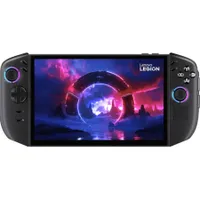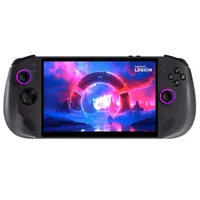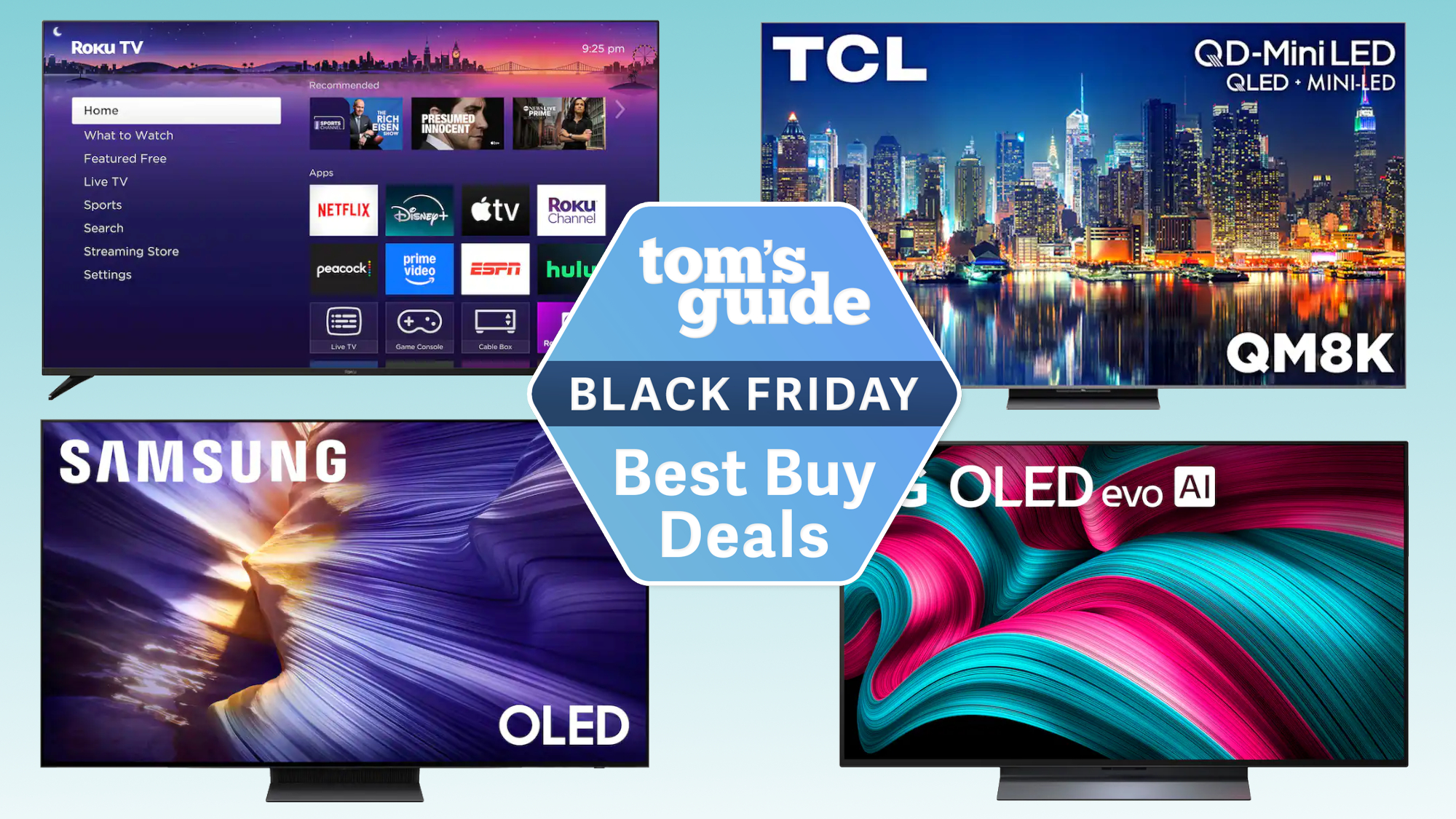Legion Go 2 vs. Legion Go S: Which handheld should you buy?
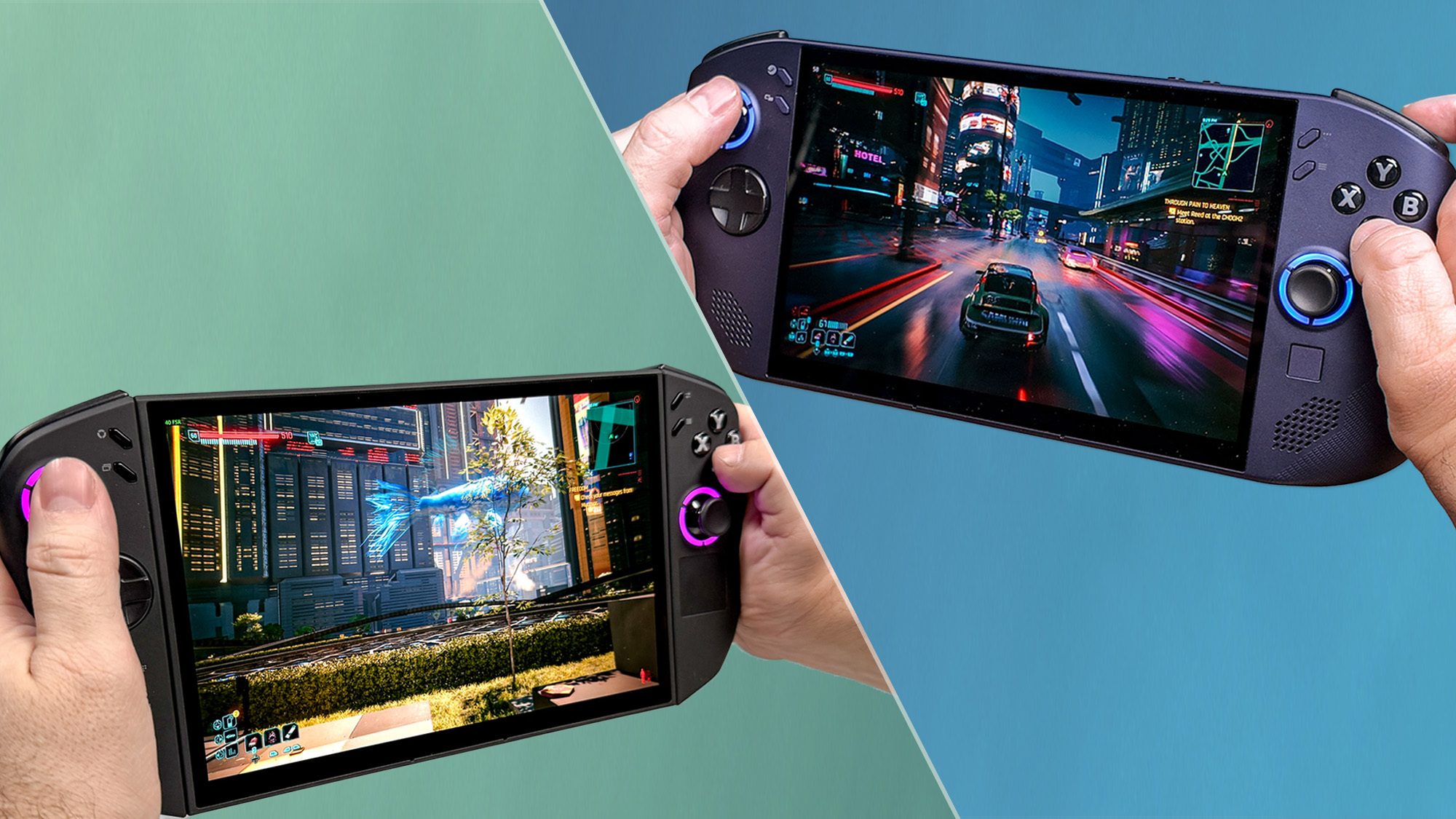
The Lenovo Legion Go 2 is here, with meaningful upgrades over its predecessor. The star of the show is the 8.8-inch OLED panel that helps games look their absolute best. Toss in the ergonomic detachable controllers and strong AMD Ryzen Z2-driven performance, and you have one impressive Windows 11 gaming handheld.
However, as great as the Legion Go 2 might be, it’s very expensive. The fact that it runs on pure Windows, has poor battery life, and requires you to seriously tinker with in-game and system settings to get the best performance also dampens what should otherwise be a slam dunk of a handheld.
Of course, Lenovo has another option for you to consider — the Legion Go S. To be specific, the model that runs on SteamOS. While this device might not pack the latest AMD APU or detachable controllers, its lower price and greater ease of use might make it a more compelling choice than the Legion Go’s successor.
The Legion Go 2 and Legion Go S rank among the best handheld gaming consoles, but how do they stack up in a direct comparison? More importantly, which one is right for you? I’ll compare each handheld’s strengths and weaknesses to help you decide which handheld to buy.
The Lenovo Legion Go 2 impresses thanks to its vibrant 8.8-inch OLED panel, comfortable design, detachable controllers and strong gaming performance. Unfortunately, its high asking price, poor battery life and Windows 11 OS prevent it from being an easy recommendation.
Legion Go 2 vs Legion Go S: Specs (tested)
| Row 0 - Cell 0 | Lenovo Legion Go 2 | Lenovo Legion Go S |
Price | $1,349 | $899 |
Display | 8.8-inch (1920 x1200) OLED 144Hz touchscreen | 8-inch WQXGA (1920 X 1200) LCD 16:10 |
Chipset | AMD Ryzen Z2 Extreme | AMD Ryzen Z1 Extreme |
OS | Windows 11 | SteamOS |
RAM | 32GB | 32GB |
Storage | 1TB | 1TB |
Battery | 74Wh | 55.5Wh |
Ports | 2x USB-C, 1x microSD slot, 1x headphone jack | 1X Micro SD card slot, 2X USB-C, 1X headphone jack |
Connectivity | Wi-Fi 6E, Bluetooth 5.3 | Wi-Fi 6E, Bluetooth 5.3 |
Colors | Eclipse Black | Nebula |
Dimensions | 11.64 x 5.38 x 1.66 inches (with controllers attached) | 11.77 x 5.02 x 0.88 inches |
Weight | 2.03 pounds (controllers attached) | 1.63 pounds |
Legion Go 2 vs Legion Go S: Price
Let’s start with the thing that’ll likely be the big determining factor for most folks, and that’s price. While neither of these Lenovo handhelds is exactly cheap — especially compared to the $319 LCD Steam Deck — one definitely costs more than the other.
Right now, the Legion Go 2 is the most expensive gaming handheld from a major manufacturer. It starts at $1,099 for a model with the regular Ryzen Z2 chip and $1,479 for a fully equipped model with the Ryzen Z2 Extreme chip and 2 TB of storage.
The Legion Go S with SteamOS starts at $649 and packs an AMD Z2 Go chip, 16GB of RAM and 512GB of storage. Our review unit costs $899 and features an AMD Ryzen Z1 Extreme chip, 32GB of RAM and 1TB of storage.
Get instant access to breaking news, the hottest reviews, great deals and helpful tips.
As you can see, even the most expensive Legion Go S model costs less than the lowest-specced Legion Go 2. If you’re budget-minded, the Legion Go S is the handheld to get.
Legion Go 2 vs Legion Go S: Design
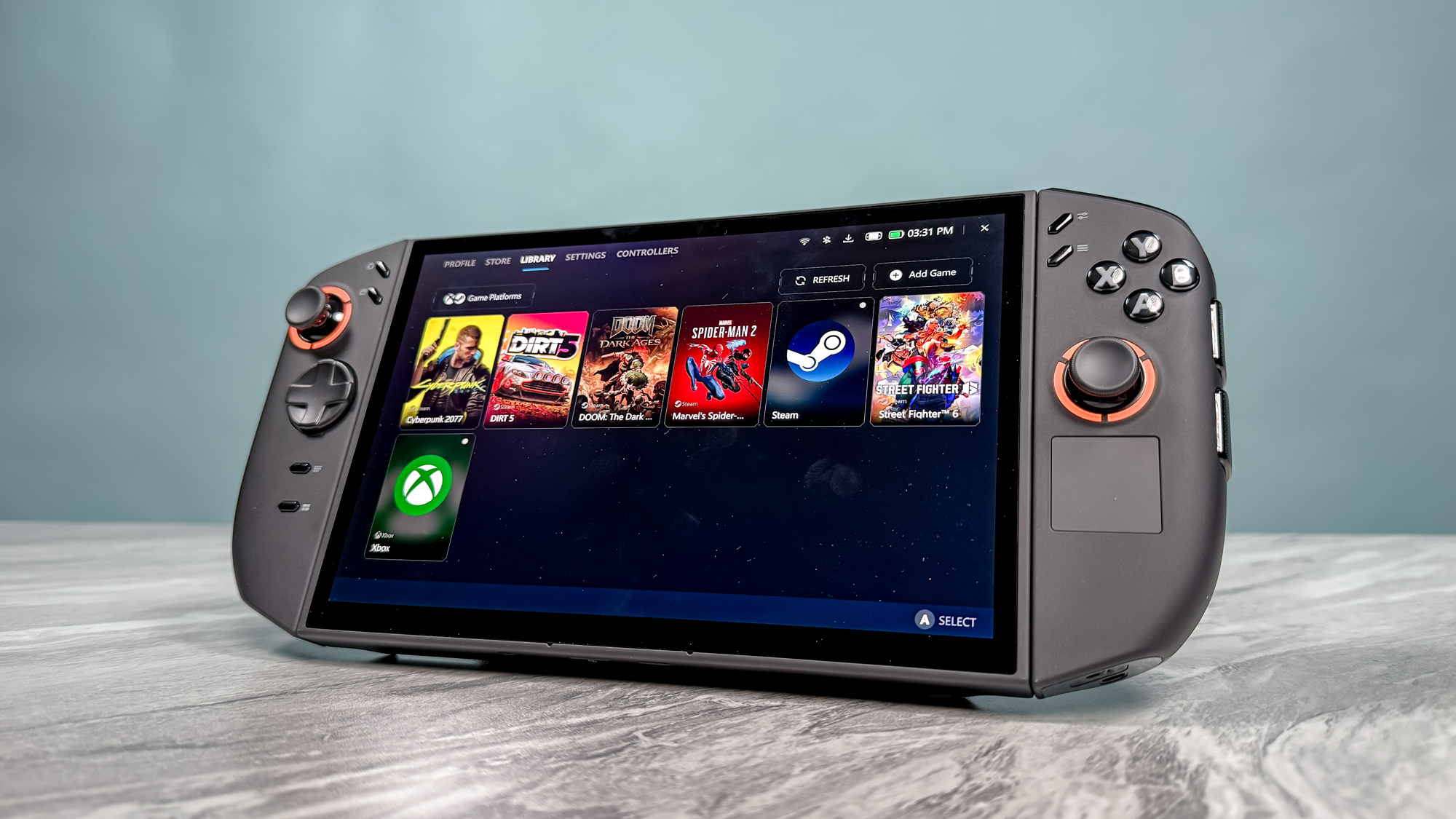
The Legion Go 2 and Legion Go S generally have the same basic design out of the box. Each has four shoulder buttons, four face buttons, and four menu buttons. They each have two analog sticks and a D-Pad, along with ports along their top and bottom sides. However, that’s where the similarities mostly end.
The biggest difference between these two systems is that the Legion Go 2 has Nintendo Switch 2-like detachable controllers. They're now rounder and smoother, with a more intuitive button layout.
As before, you can use the right controller as a vertical mouse for greater control in FPS games. The Hall Effect joysticks are fluid and responsive, and the rounded D-Pad is perfect for navigating menus or playing fighting games.
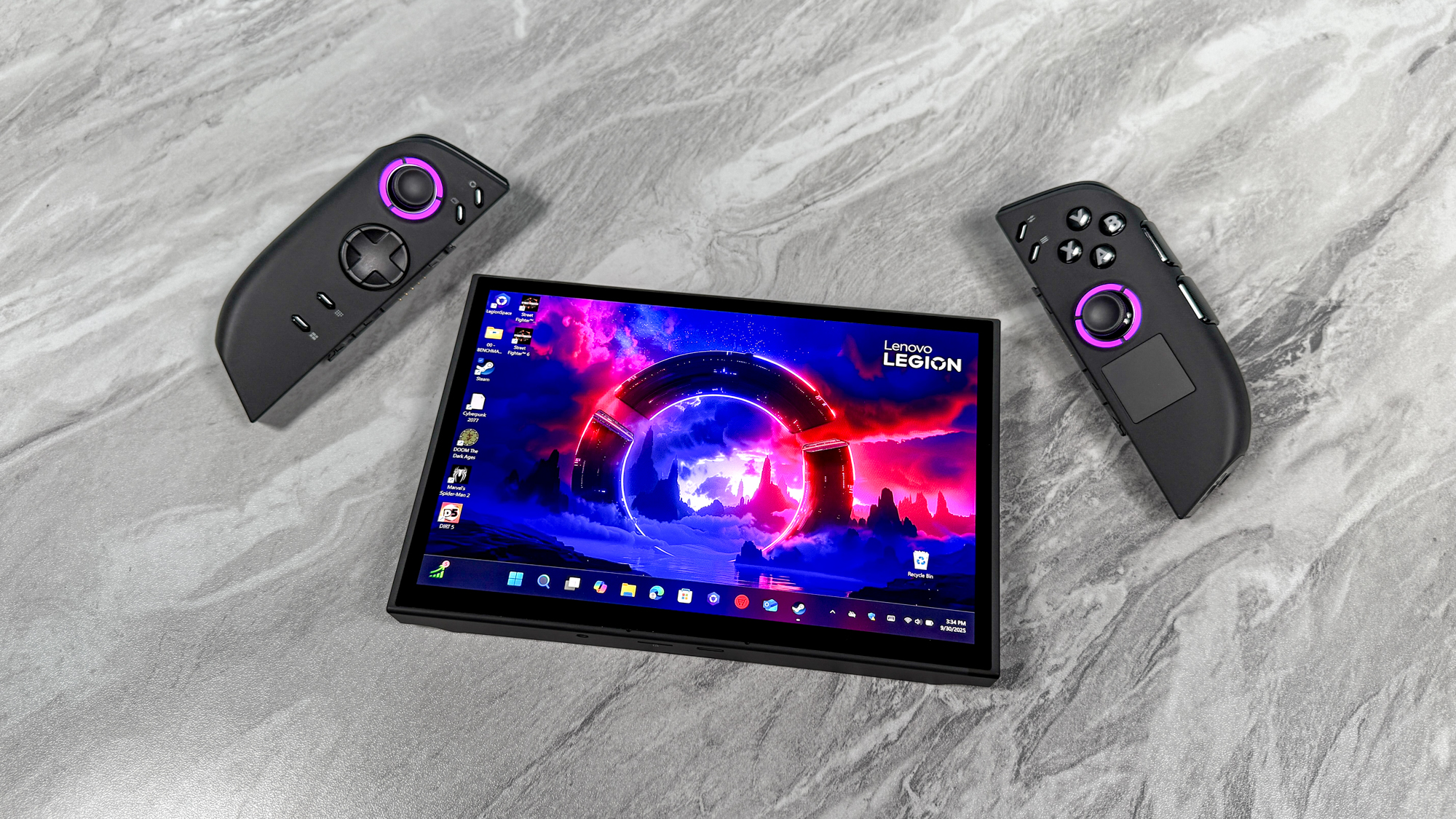
With the controllers attached, the Legion Go 2 measures 11.64 x 5.38 x 1.66 inches and weighs 2.03 pounds. That’s slightly bigger and heavier than the original, but it’s much more comfortable to hold thanks to its rounder controller grips and even weight distribution.
However, the Legion Go 2 can get heavy after a while. Thankfully, you can use the kickstand on the back to set up the handheld on a flat surface and play that way.
The Legion Go S ditches the removable controllers and instead has a uniform body design that’s similar to the Asus ROG Ally X. It’s comfortable to hold thanks to its ergonomic design, grippy corners and smart button placement. At 11.77 x 5.02 x 0.88 inches and 1.63 pounds, it’s smaller and lighter than the Legion Go 2.
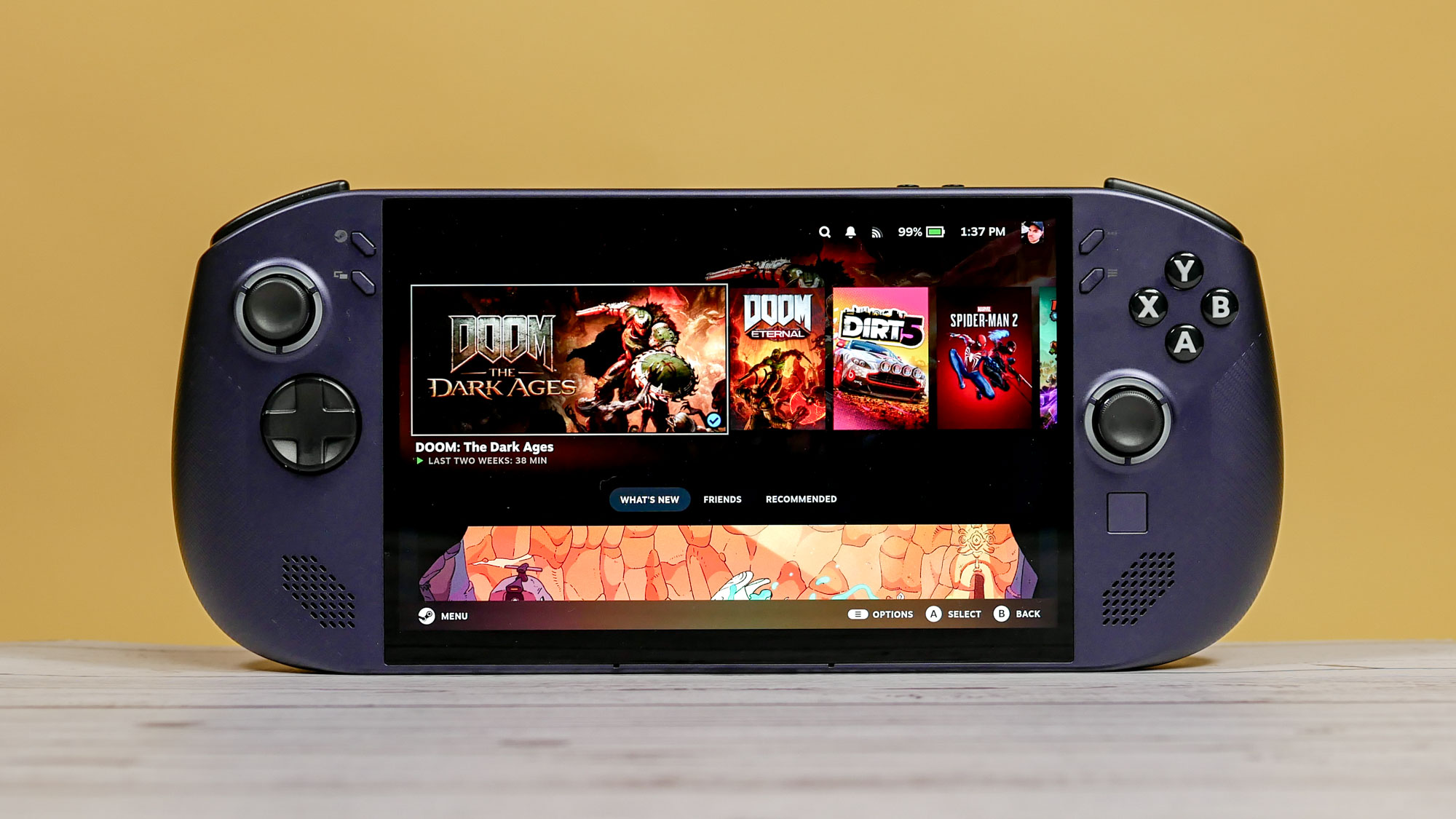
The Legion Go S’ asymmetrical Hall Effect analog sticks and the rounded D-Pad are as responsive as the face and shoulder buttons. I also like that L2 and R2 have trigger locks to set their actuation points, which can be beneficial for first-person shooting games.
The Legion Go S has a more comfortable uniform design that’s easier to hold for longer periods. Conversely, the Legion Go 2’s detachable controllers, which let you play in handheld or tabletop modes, make the system more versatile.
Design-wise, neither has a clear edge since they’re so different from one another.
Legion Go 2 vs Legion Go S: Display
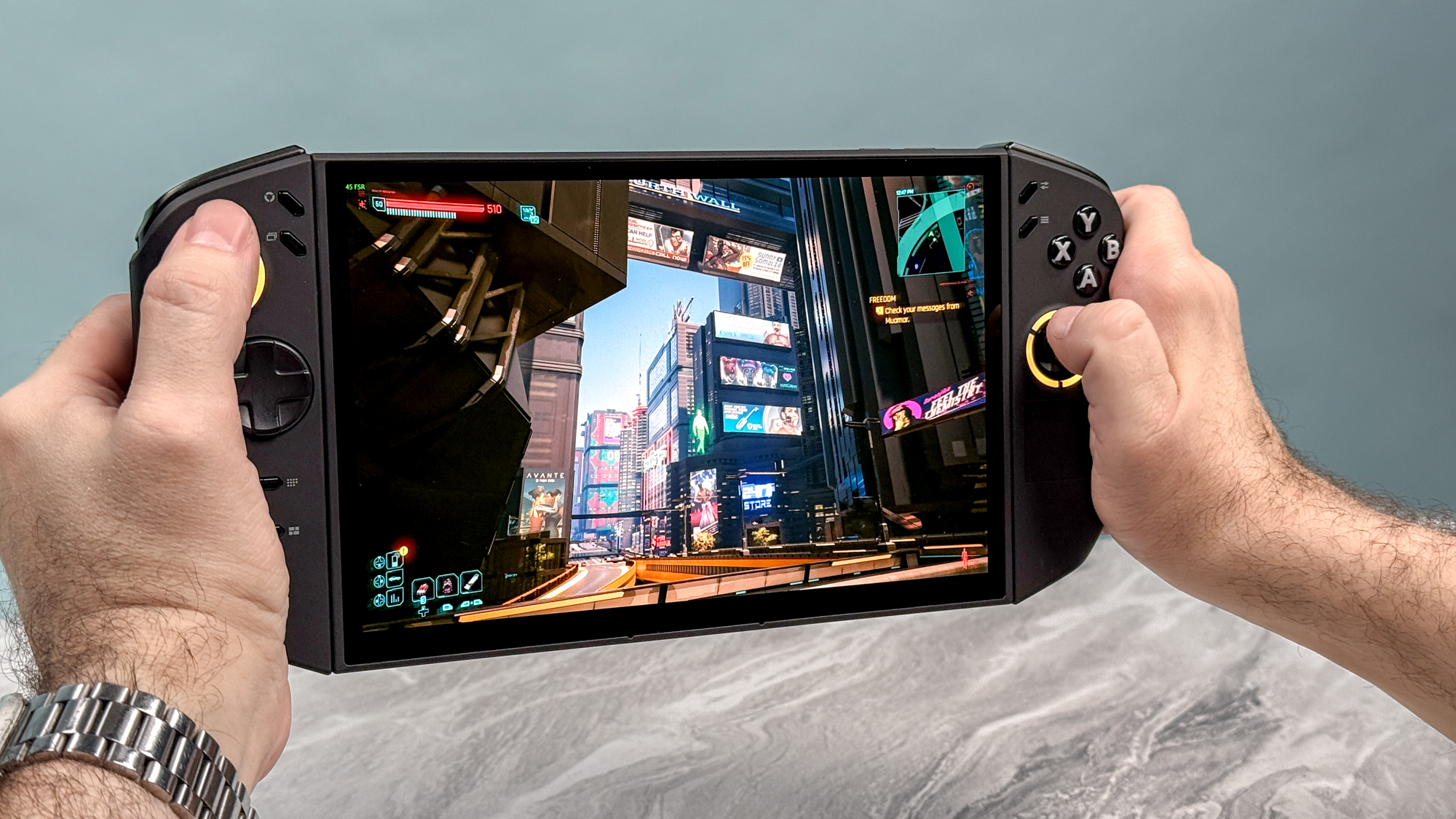
This is where the Legion Go 2 has a distinct advantage. While the Legion Go S’s display certainly delivers bright and colorful images, that’s not quite enough to overtake the Legion Go 2’s superior panel.
For starters, the Legion Go 2 has an 8.8-inch display, whereas the Legion Go S has a smaller 8-inch display. That naturally helps everything appear larger, though not necessarily sharper, since both of the systems’ displays top out at 1200p. Resolution aside, the Legion Go 2’s larger canvas gives everything more room to breathe.
| Row 0 - Cell 0 | Legion Go 2 | Legion Go S | Asus ROG Ally X |
Nits (brightness) | 445 (SDR) | 623 (HDR) | 441 | 523 |
sRGB | 191.7% | 116.3% | 112.7% |
DCI-P3 | 135.8% | 82.4% | 79.8% |
Delta-E | 0.28 | 0.33 | 0.36 |
Of course, the main draw of the Legion Go 2 is its OLED panel. That, coupled with HDR support, provides a nice contrast between darker and lighter elements. The vibrant neon lights and holograms in Cyberpunk 2077 are absolutely mesmerizing on the Legion Go 2.
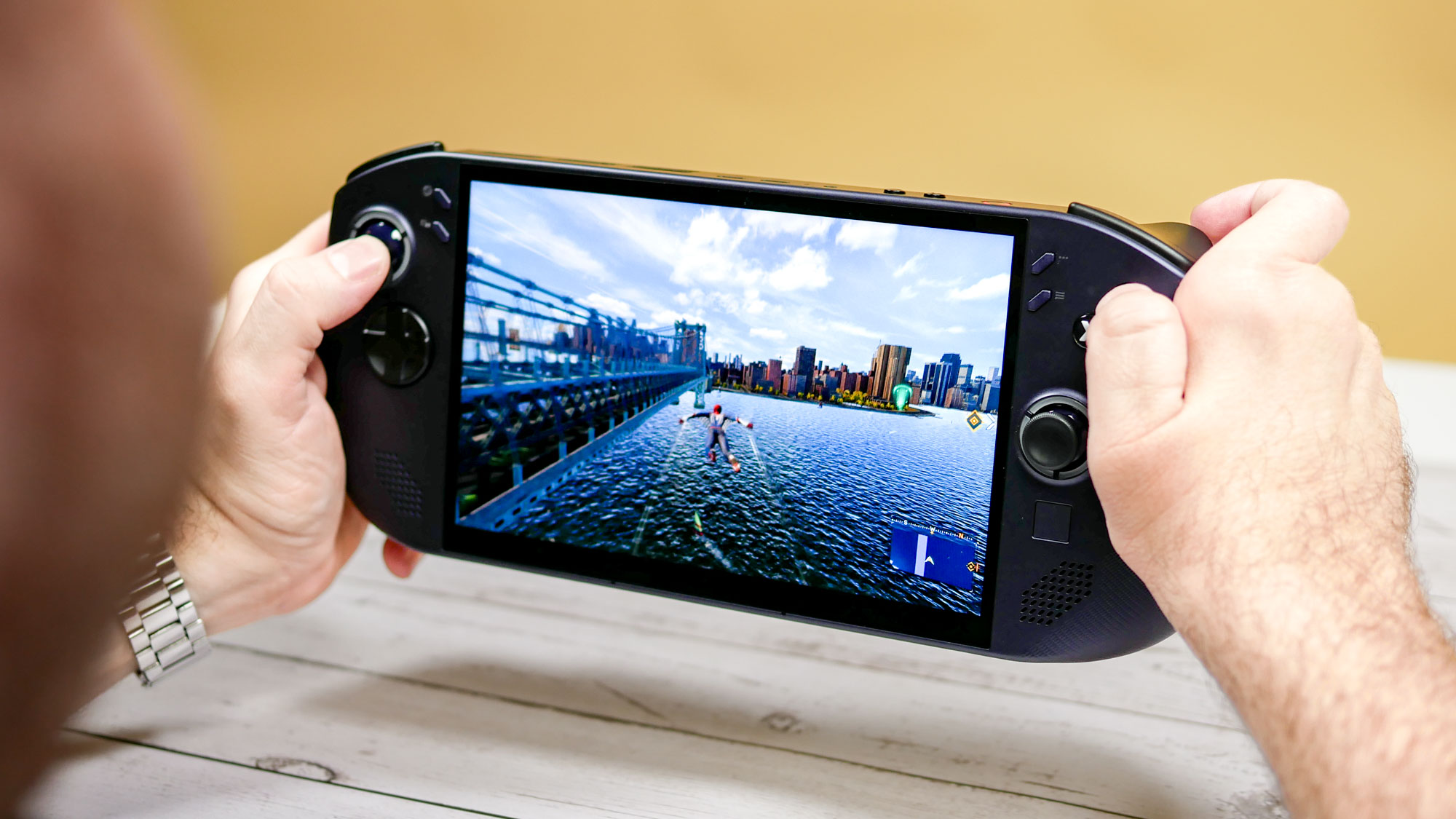
Our lab tests confirm my experience. The Legion Go 2 delivers oversaturated colors (sRGB and DCI-P3) compared to the Legion Go S. Lenovo’s latest handheld also delivers strong color accuracy (Delta-E).
The Legion Go 2 has the most beautiful display I’ve ever seen on a handheld. It’s hard for the Legion Go S to compete with that.
Legion Go 2 vs Legion Go S: Performance
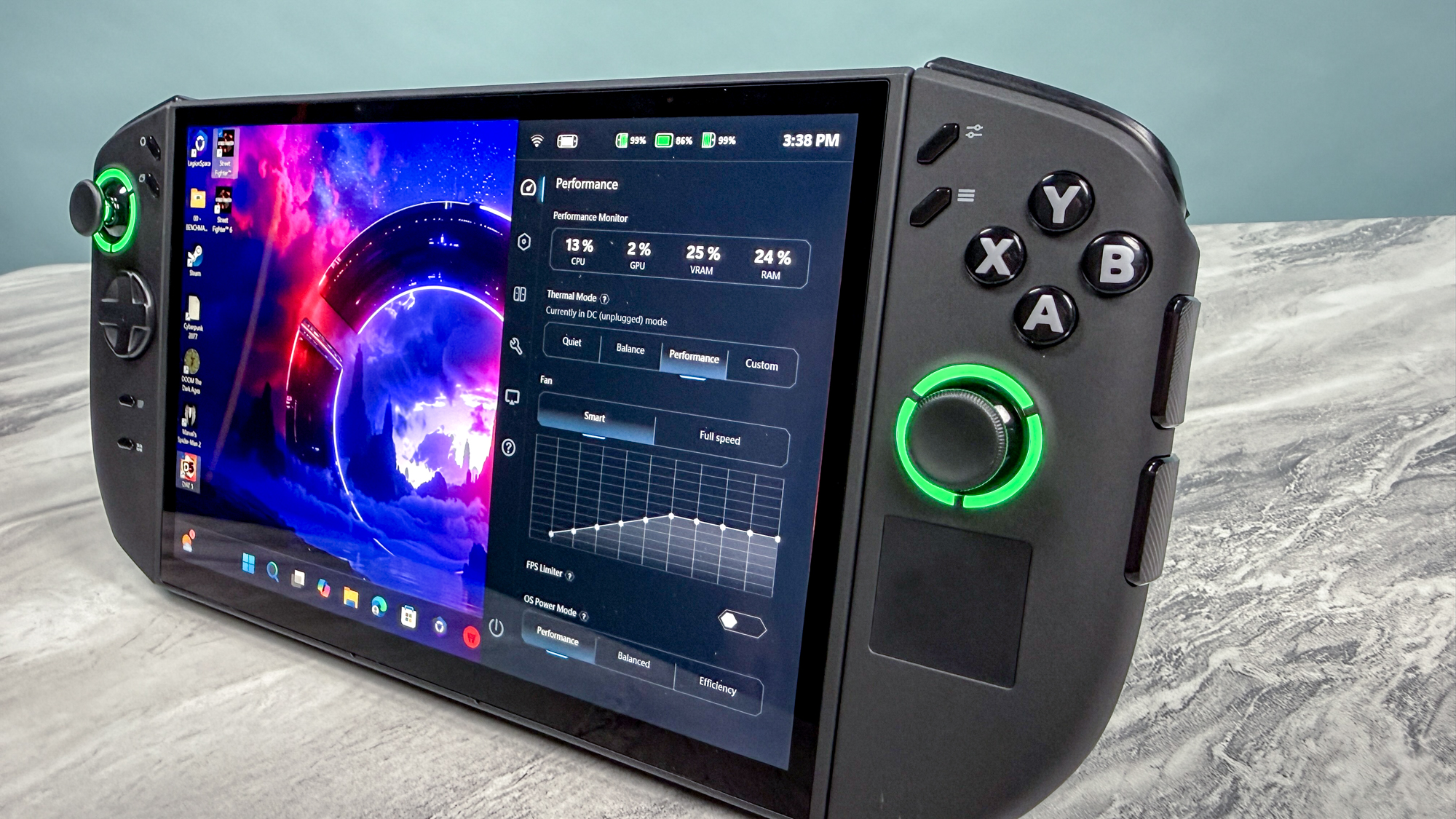
Our Lenovo Legion Go 2 review unit packs an AMD Ryzen Z2 Extreme chip, 32GB of RAM and a 1TB SSD. Conversely, the Legion Go S I reviewed features an AMD Ryzen Z1 Extreme chip and the same amount of RAM and storage.
Given the former’s updated processor, you’d expect better performance. While that can be true, the gulf between the two systems isn’t that wide.
In our lab tests, we run several games through their respective built-in benchmark tools with graphics set to Ultra at a device’s native resolution. As you can see in the table below, Cyberpunk 2077 can barely run at 5 frames per second, which is decidedly unplayable. Dirt 5 fares decently at 34 fps, while Far Cry 6 can barely hit 30 frames per second.
| Row 0 - Cell 0 | Legion Go 2 | Legion Go S | Asus ROG Ally X |
Cyberpunk 2077 | 4.45 fps | 4.52 fps | 4.94 fps |
Dirt 5 | 34.4 fps | 32.2 fps | 24 fps |
Far Cry 6 | 28 fps | 31 fps | 24 fps |
These results are bad enough, but they’re made worse when you see that the AMD Ryzen Z2 Extreme-powered machine has marginally better performance than handhelds with the Z1 Extreme chip.
While our in-house testing paints a bleak picture, my own anecdotal testing shows the potential of AMD’s latest handheld APU. For instance, I got Cyberpunk 2077 to run at 50 to 60 fps when I lowered the resolution to 800p. More importantly, enabling AMD’s FSR 3 boosted the framerate to the mid-50s at the native 1200p resolution.
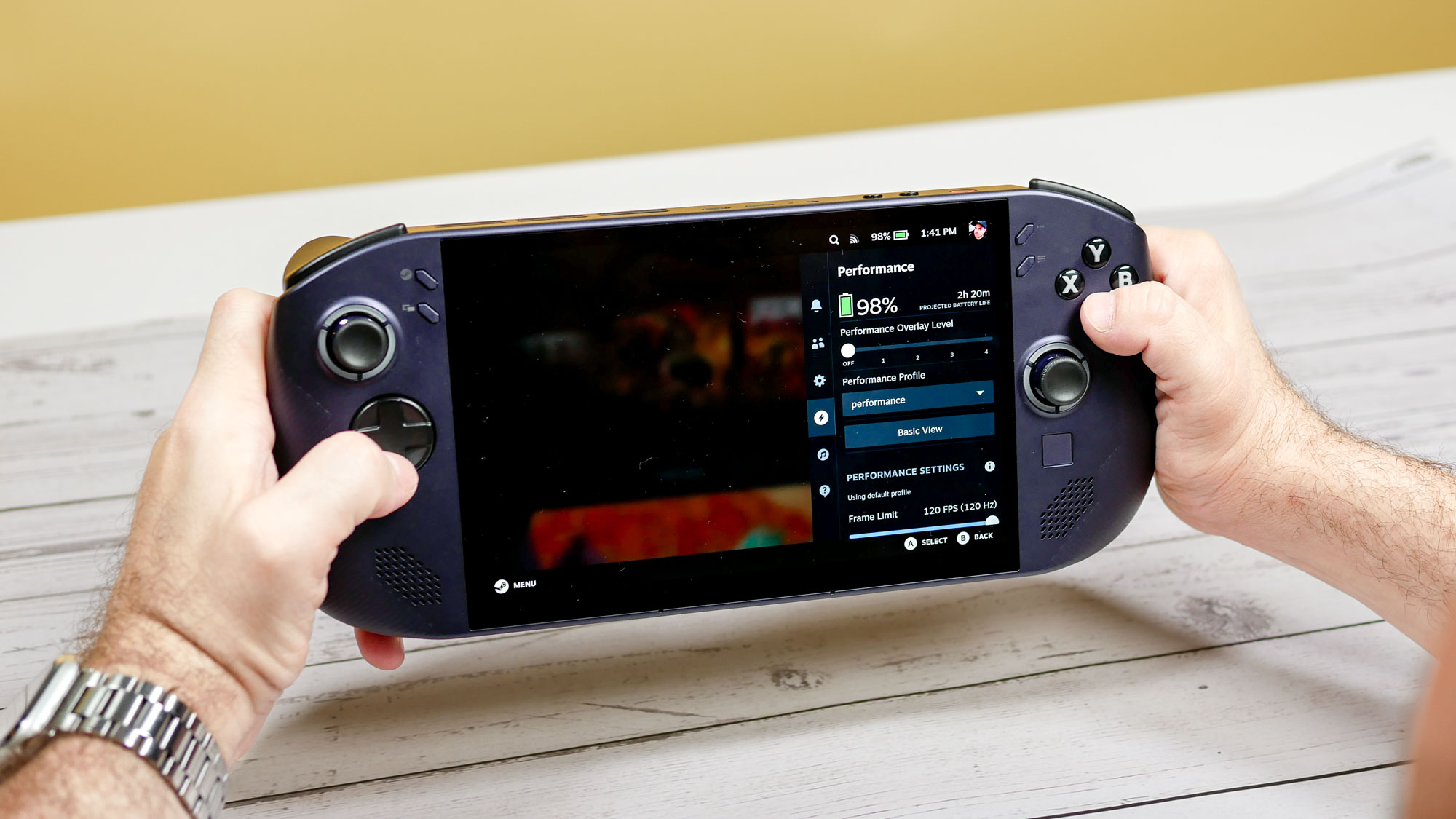
I also got better results from the Legion Go S when I toyed with settings. For example, I played Doom: The Dark Ages at 1200p resolution, medium graphical settings and with FSR (frame generation) disabled. With those settings, I saw frame rates in the mid-20s. With FSR enabled, the fps jumped to 35. I got a smooth 56-61 fps at 800p resolution with FSR, though the game doesn’t look so good at this lower resolution.
Out of the box, you won’t get the best performance from either system. With some tinkering in settings, not to mention enabling FSR in supported games, you’ll get better results.
Regardless, the Legion Go 2 delivers only marginally better performance than the Legion Go S. There’s a possible culprit, which I’ll discuss in the next section.
Legion Go 2 vs Legion Go S: Interface
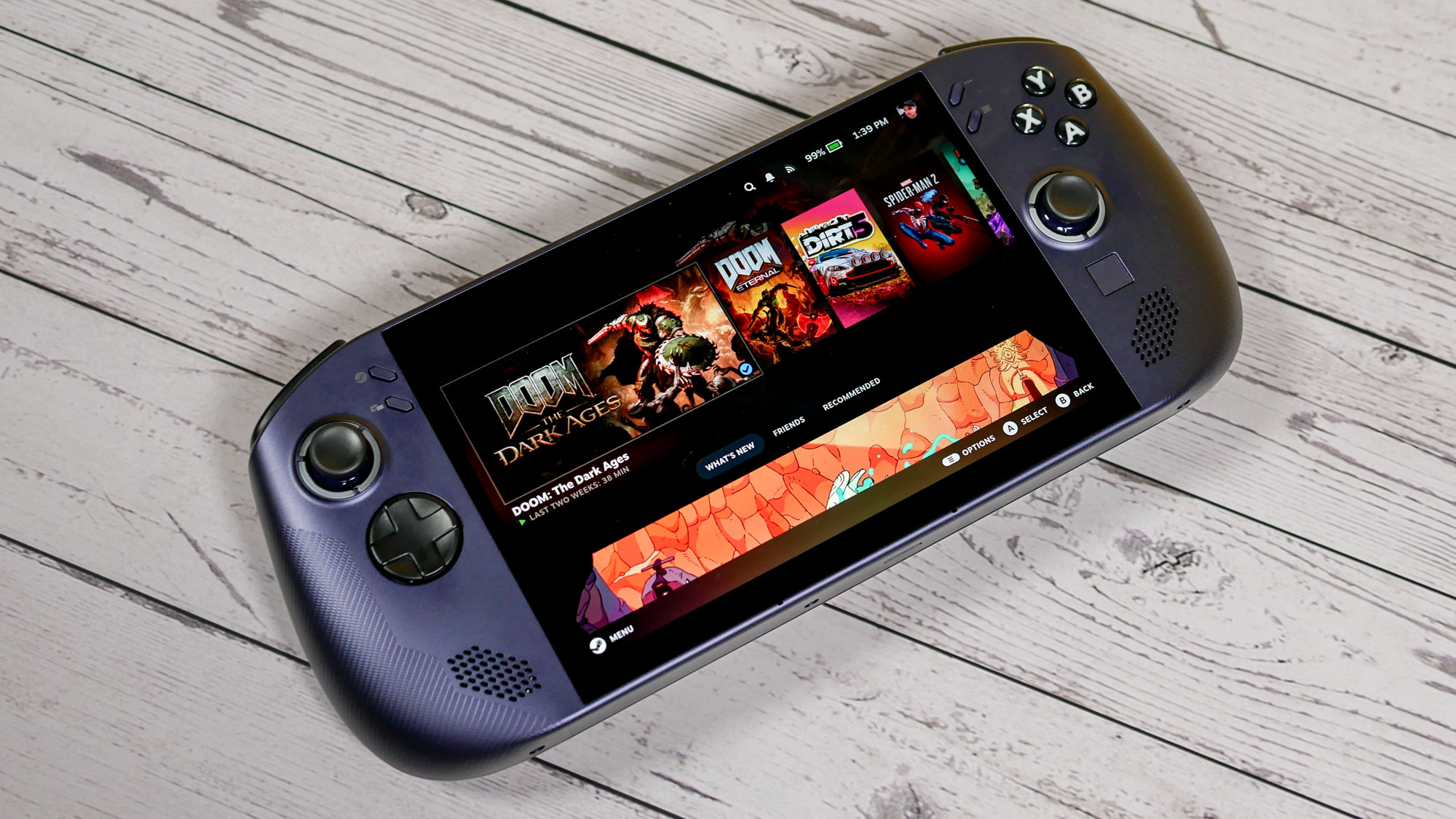
The Legion Go S runs on basic Windows 11, while the Legion Go S has a model with SteamOS. The latter is specifically designed for handheld controls and doesn’t have all the bloat of Windows 11. Because of that, it’s easy to navigate SteamOS’ menus and to jump straight into your games. The same isn’t true for Windows 11.
Sure, Microsoft’s operating system is great for the best gaming laptops and the best gaming PCs. However, it doesn't work seamlessly with a handheld's control scheme. Since you can't navigate through most of Windows (especially the desktop), you're forced to move the mouse cursor with the right analog stick, or otherwise use your finger like you would on one of the best tablets. This can be a chore, even on the large 8.8-inch screen.
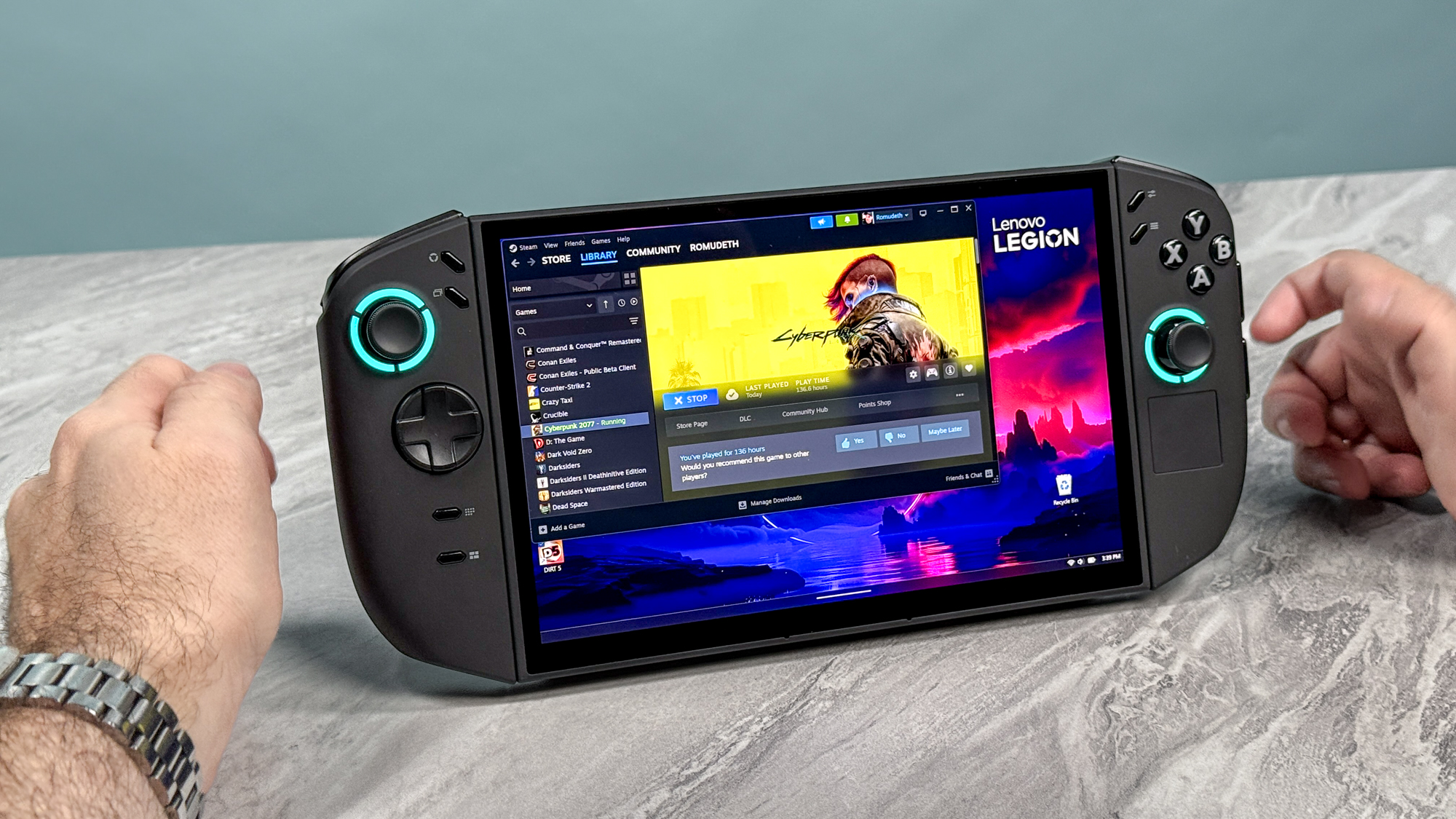
Going back to performance, Windows 11 also seems to contribute to slowing down gaming performance and battery life, which is something we noted when we installed SteamOS on the original ROG Ally X and saw improved performance and battery life. This could be why we didn’t see a dramatic performance improvement on the Ryzen Z2 Extreme-powered Legion Go 2.
Windows 11 might have greater game compatibility and system customization than SteamOS, but Valve’s OS is designed for handhelds, so it’s easy to jump into your favorite games without a hassle. This is evident not only on the Steam Deck, but on Lenovo’s own Legion Go S with SteamOS.
Legion Go 2 vs Legion Go S: Battery
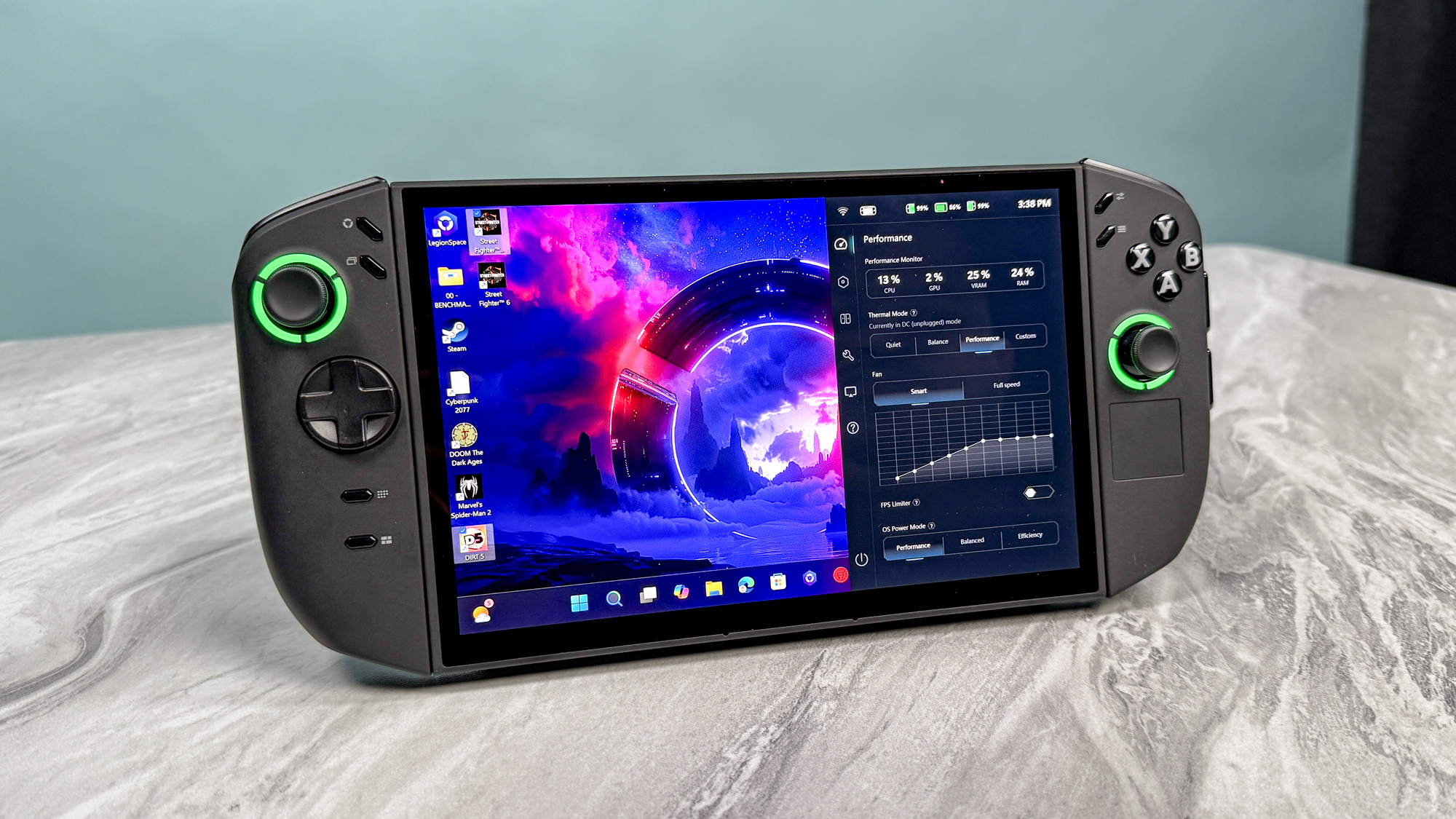
Gaming handhelds generally have battery life comparable to gaming laptops, which can range from one to two hours at most. Unfortunately, neither the Legion Go 2 nor the Legion Go S buck this trend. If you plan to travel with either device, don’t forget to bring its respective 65W AC adapter.
In the PCMark 10 gaming battery test, the Legion Go 2 lasted for 2 hours and 15 minutes. That’s slightly longer than its predecessor, but an hour less than the ROG Ally X.
| Row 0 - Cell 0 | Web surfing | Gaming |
Lenovo Legion Go 2 | 10:45:10 | 2:15 |
Lenovo Legion Go | 6:32:19 | 1:59 |
Asus ROG Ally X | 8:19:08 | 3:14 |
In our standard battery test, which involves continuous web surfing at 150 nits of screen brightness, the Legion Go 2 lasted for 10 hours and 45 minutes. If you want to use the system for basic tasks like web surfing or watching videos, you can do so for a reasonable length of time.
Since the Legion Go S runs on SteamOS, we weren’t able to conduct our usual slew of battery life tests. To that end, I fired up Doom: The Dark Ages with the display set to 1200p resolution and selected performance mode to get the full 30W TDP. It took about 1.5 hours before I got a battery life warning.
The Legion Go 2 can endure longer than the Legion Go S, but don’t expect more than an extra 30 minutes at most.
The Lenovo Legion Go S with SteamOS is a true Steam Deck rival and arguably puts Windows 11 handheld to shame thanks to its snappy interface and strong performance. While its fans can get overly loud and its battery life isn’t great, SteamOS alone makes up for any shortcomings.
Legion Go 2 vs Legion Go S: Which handheld should you buy?
The Lenovo Legion Go 2 impresses thanks to its OLED panel, ergonomic design and strong gaming performance. If you’re willing to spend up to $1,479 and spend time adjusting a game’s graphical and video settings to get the best performance — not to mention deal with Windows — then you can have a good time using Lenovo’s latest handheld.
On the other hand, if you don’t want to spend over $1,000 for a gaming handheld and want to avoid Windows, then the Lenovo Legion Go S is the better choice.
Follow Tom's Guide on Google News and add us as a preferred source to get our up-to-date news, analysis, and reviews in your feeds. Make sure to click the Follow button!

Tony is a computing writer at Tom’s Guide covering laptops, tablets, Windows, and iOS. During his off-hours, Tony enjoys reading comic books, playing video games, reading speculative fiction novels, and spending too much time on X/Twitter. His non-nerdy pursuits involve attending Hard Rock/Heavy Metal concerts and going to NYC bars with friends and colleagues. His work has appeared in publications such as Laptop Mag, PC Mag, and various independent gaming sites.
You must confirm your public display name before commenting
Please logout and then login again, you will then be prompted to enter your display name.
